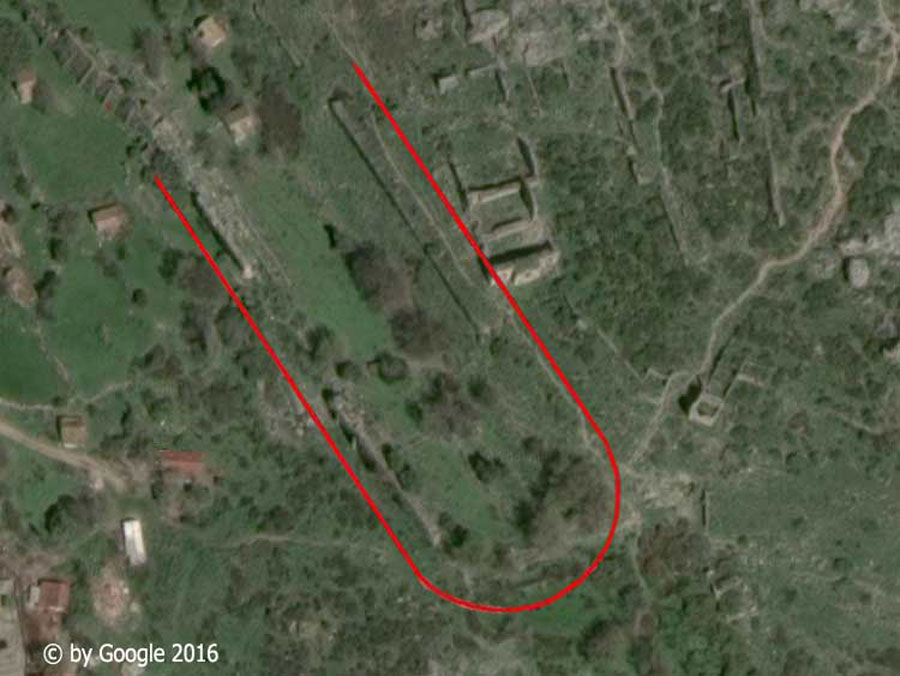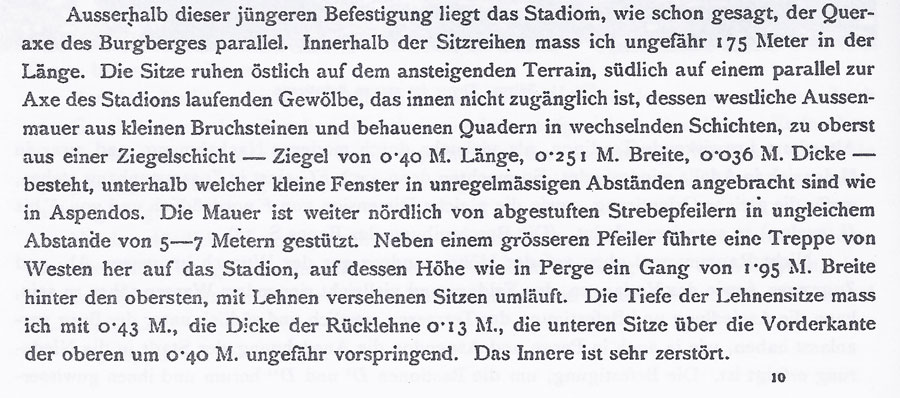 |
|
Ancient stadiums in Turkey Sillyon |
||||||||||||
|
|
|
|||||||||||
|
||||||||||||
|
The stadium of Sillyon is hardly recognizable as such anymore. The design of the stadium, as well as the finds in the area of the stadium, indicate both Greek-Hellenistic and early Roman construction activity and use. One searches in vain for the remains of the rows of seats. Archaeologists at the University of Antalya suspect a reuse of the seat stones in the stadium of the nearby Perge. |
||||||||||||
| The history of Sillyon: | ||||||||||||
|
Little is known about Sillyon from history. However, the remains of the city document a millennia-long history. Sillyon was probably founded about 3000 years ago. After the Trojan War, parts of the Greek army had become independent and established settlements all over the eastern Mediterranean, including the cities of Aspendos and Perge, which was within sight. According to a tradition, the legendary seer Mopsos was involved in the foundation of the city. Sillyon was first mentioned in the writings of the geographer Skylax in the fourth century BC. Alexander the Great marched into Sillyon in 333 BC and stationed important troops there. Later, the city was massively expanded for defence purposes. In the eventful history of the city, it experienced flowering times again and again. Within sight of the sea and the nearby Perge, the city must have been of considerable strategic importance. Besides Aspendos, Perge and Attaleia (today Antalya) it belonged to the most important cities of Pamphylia. Finds indicate the beginning of coinage in the 3rd century BC. Not much is known about the city from Roman times. In Byzantine times Sillyon became a bishop's seat. From the Seljuk period (1038-1194 A.D.) remains of buildings and a small mosque have been preserved on the plateau. The city was completely abandoned from the 13th to the 14th century AD and slowly decayed. The inhabitants migrated mainly to Perge and to the better fortified Attaleia (Antalya). Until the 20th century, landslides have repeatedly caused parts of the city to fall off the steep Table Mountain, most recently the Odeon in 1969, the theatre's stage house, as well as the orchestra and several rows of seats. |
||||||||||||
 |
||||||||||||
|
|
||||||||||||
| Reste der Stützmauer des Stadions | ||||||||||||
|
|
||||||||||||
|
|
||||||||||||
|
|
||||||||||||
|
|
||||||||||||
| Karl Graf Lanckoroński wrote around 1890: | ||||||||||||
|
|
||||||||||||
|
The Original |
||||||||||||
|
|
||||||||||||
| Photos: @chim, Google | ||||||||||||
| Translation aid: www.DeepL.com/Translator | ||||||||||||
| Source: Wikipedia and others | ||||||||||||
|
|
||||||||||||



